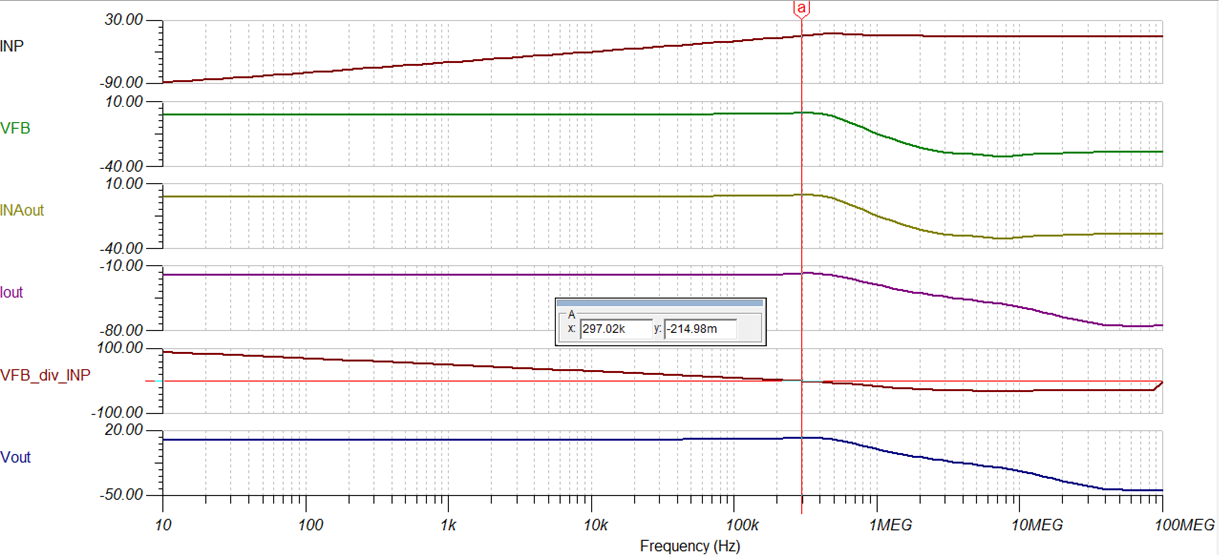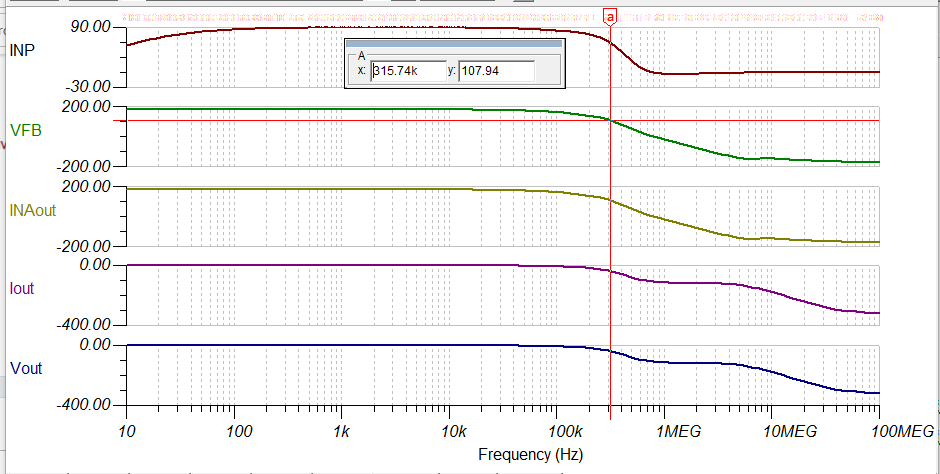Other Parts Discussed in Thread: OPA192
Hello all, I am designing a current source and this is the design I have gone with: 
U1 is the driver with a shunt R1 in series with the output. U2, U3, U4 form an INA to convert the OPA547's output current to a voltage, and U5 is an input buffer for an ADC. The reason I inverted the INA inputs and connected the feedback to the positive terminal of the OPA547 is so that I can convert this to a voltage source by disconnecting the INA output and grounding the positive input of U1, and then adding a feedback resistor between U1's output and negative input, and then the INA output can go to an ADC to monitor current. I feel that this uses less relays. Another thing worth mentioning is that, while I understand the issues with matching in discrete INAs, I did it this way because I needed the INA to be significantly faster than the 547, which has a GBW of 1MHz. The 192's have a GBW of 10MHz and are each in a gain less than 10, with an overall INA gain of ~55. I could not find an INA from TI with a high enough bandwidth at that gain. It may be possible that I was not using the parametric search correctly so if you could suggest a part taht would be great.
I am aiming for +/-15V operation on the output with 300mA output capability.
I did a few things to try to check stability and would like someone to give me some feedback to see if I did it correctly or if they have any suggestions on how to change this circuit or pick better parts, Thanks.
I started by grounding the VG1 input and disconnecting the feedback and adding a 0 VDC and 1VAC source and doing phase/gain AC transfer analysis in TINA. Using the post processor I plotted VFB/INP. Here is the gain plots where we can see a 0 crossing just before 300KHz.
Then looking at the phase plot I found that VFB has a phase margin over 100 at 300Khz, which I understand means the circuit is stable.
Finally I input a few signals and looked at DC transient settling to look at ringing. I had input steps of 100mV with .1uS rise time, a 200mV with .1uS rise time, and a 5.46V step with .1uS rise time. The last value corresponds to swinging the OPA547 from +18V 500mA to -18V -500mA. In all the cases there was no more than a 2-5% overshoot with 2 or so rings that settled within 10-20uS. That seems reasonable to me and I was mostly just hoping that the circuit eventually settles with no infinite lock up unrecoverable oscillations.
My next step is to try to optimize C1 for whatever load capacitance I want to drive. If anyone can provide feedback on my analysis and let me know if my assumptions are correct or if they noticed anything I should change, I would appreciate it.
Thanks,
Tina file attached:



